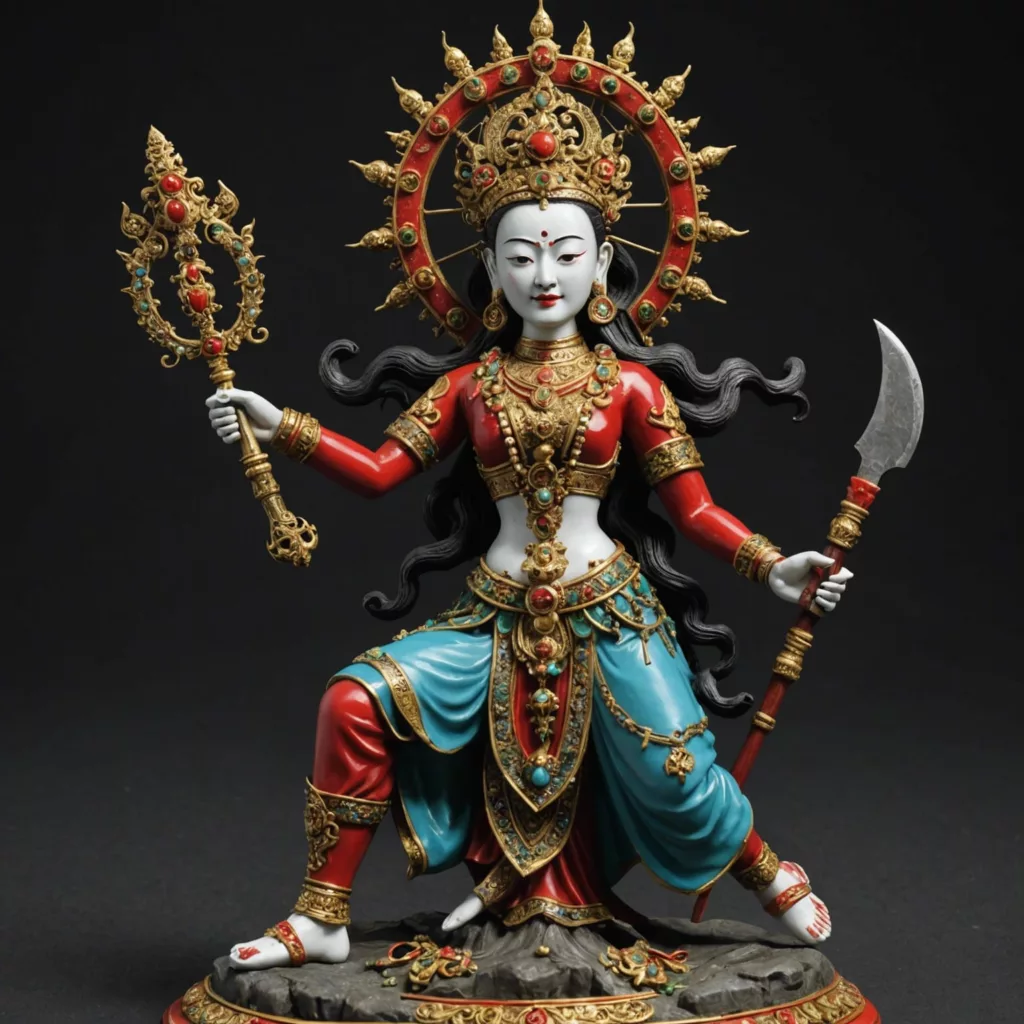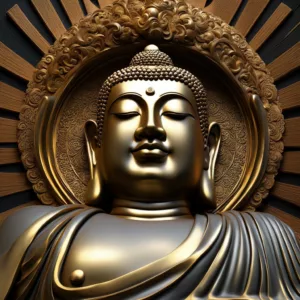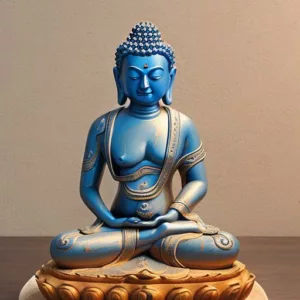
Vajrayogini is a dakini and fully enlightened Tantric deity. Her specialty is pointing out the true essence of mind. She uses the passion of the practitioner to liberate them.
I did Vajrayogini about 20 years ago. My first sadhana, as with so many practitioners. I completed the requirements and fire pujas, then went on to other things. I still think about VY sometimes. It was very helpful in learning the basic forms of the practice. Things were detailed out and clear, step by step. I found a lot of magic in the practice.
Secrets of Meditation for Anxiety
Like millions of people, you may have suffered from anxiety for years. Meditation, yoga, peaceful music – it never works. It takes too long, and it’s not stable. Why? Because peace is treated as a cause for freedom, but it’s not – it’s the result. The cause to free yourself from anxiety is completely different.
Click now to Overcome Anxiety for good.
Table of Contents
Summary: Vajrayogini
Central Node: Vajrayogini (Tibetan Buddhism)
Type: Yidam Deity, embodiment of wisdom and enlightened action
Function:
- Supports practitioners in achieving enlightenment
- Represents transformation and overcoming negativity
- Offers protection and blessings
Iconography:
- Usually depicted as a young woman in a wrathful or semi-wrathful form
- Often holds a skull cup (kapala) and a ritual dagger (phurba)
- Symbolizes the transformation of negative emotions into wisdom
Practice:
- Vajrayogini practice involves visualization, mantra recitation, and offerings.
- It is considered an advanced practice within Vajrayana Buddhism and requires initiation from a qualified teacher.
Relationship to Other Deities:
- Vajrayogini is seen as a consort of Heruka, a wrathful manifestation of Buddhas.
- She is associated with various lineages and can have different forms and practices depending on the lineage.
Possible Connections:
- The concept of Vajrayogini connects to the Vajrayana principle of transforming negative emotions into enlightened qualities.
- Her wrathful aspect represents the fierce wisdom needed to cut through ego-clinging.
- She is sometimes linked to dakinis, female figures associated with wisdom and energy.
Important Notes:
- Vajrayogini practice is complex and requires proper guidance from a qualified Vajrayana Buddhist teacher.
- Respectful approach and proper authorization are crucial before engaging in her practices.
Additional Notes:
- Vajrayogini is a multifaceted deity with rich symbolism and interpretations within Vajrayana traditions.
How to meditate like a yogi
and enter profound samadhi
Vajrayogini Details
Vajrayogini began likely around the 11th century. Her origin is from the Hindu Tantras. Her consort is Chakrasamvara. She arises from transcendent passion, passion that wants to benefit beings in this world, to bring beings to liberation. Her gift is infinite wisdom.
She holds the hook knife in her right hand which cuts through obscurations into the nature of reality. In her left hand, she holds a skull cup filled with amrita, which is the wisdom that sees the nature of reality. She has a katvangha, a pole with a trident, symbolizing the consort. She works with people possessing a lot of passion and is very good at transforming that passion into enlightened passion. It’s also called “compassion,” the passion that wants to see reality and wants to help other people be free of suffering.
She is red, 16 years old, and possesses a third wisdom eye. Vajrayogini is a dakini and is also considered the mother of all the Buddhas. By practicing her sadhanas we can become elevated to the higher paths. We can transcend ordinary birth and death and take control of our birth. We can transmute ordinary emotions into wisdom. When we extend this we can do the fire puja practices which extend to other sadhanas as well, but also chod of which she specializes, and the six yogas of Naropa, the core practice of which is Tummo.



Vajrayogini has the power to settle the mind directly into wisdom. It could be said she is a form of Mahamudra itself. When practitioners are looking for their first yidam, Vajrayogini is a very good one. Her practice is straightforward, not overly complex, but has enough complexity to introduce one to the form. It’s very well explained so it doesn’t assume that we know a lot of things that we may not know. So it’s helpful to move towards that.
It also works more with wisdom, which is easier, and simpler than the Upaya side – skilful means. The masculine aspect tends to be complex for certain reasons. Wisdom is just the bare merging with reality, whereas skillful means entails working with the infinite variety of sentient beings.
When one famous teacher, I believe it was Marpa, but I may be wrong, was asked what’s the best yidam to do, he said, “little red Vajrayogini.”

May all beings be happy
May all beings be peaceful
May all beings be safe
May all beings awaken to the light of their true nature
May all beings be free







